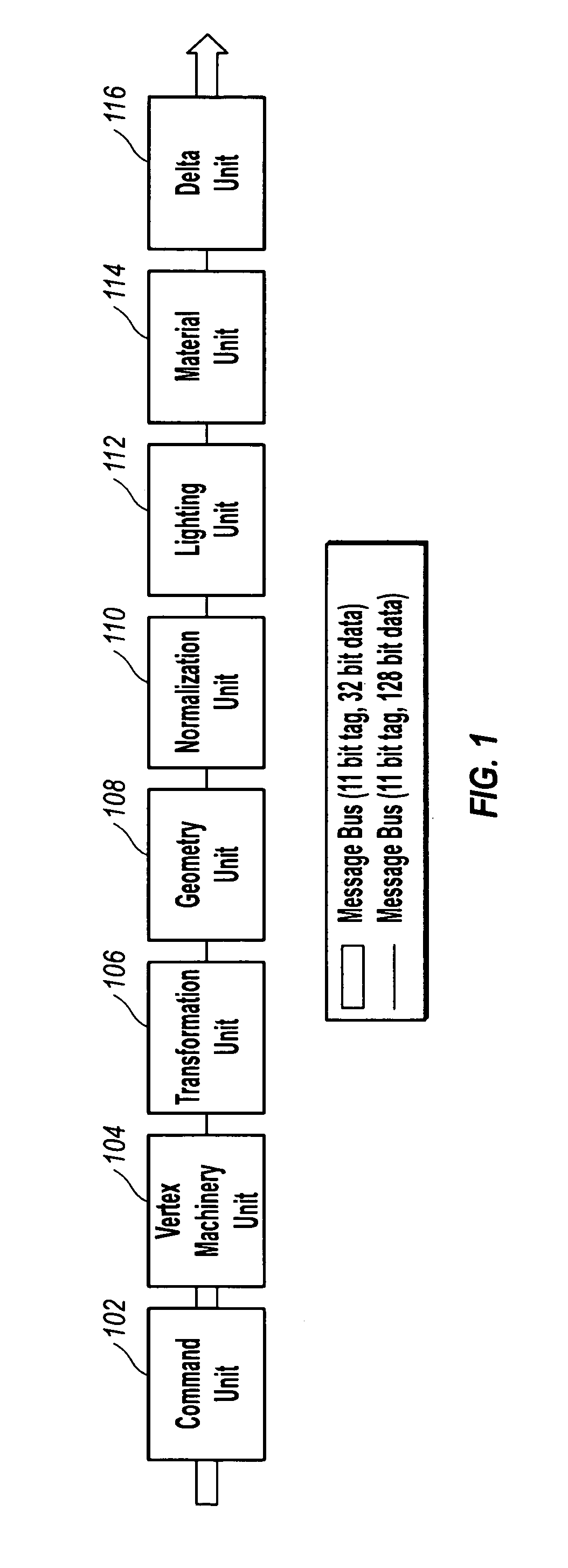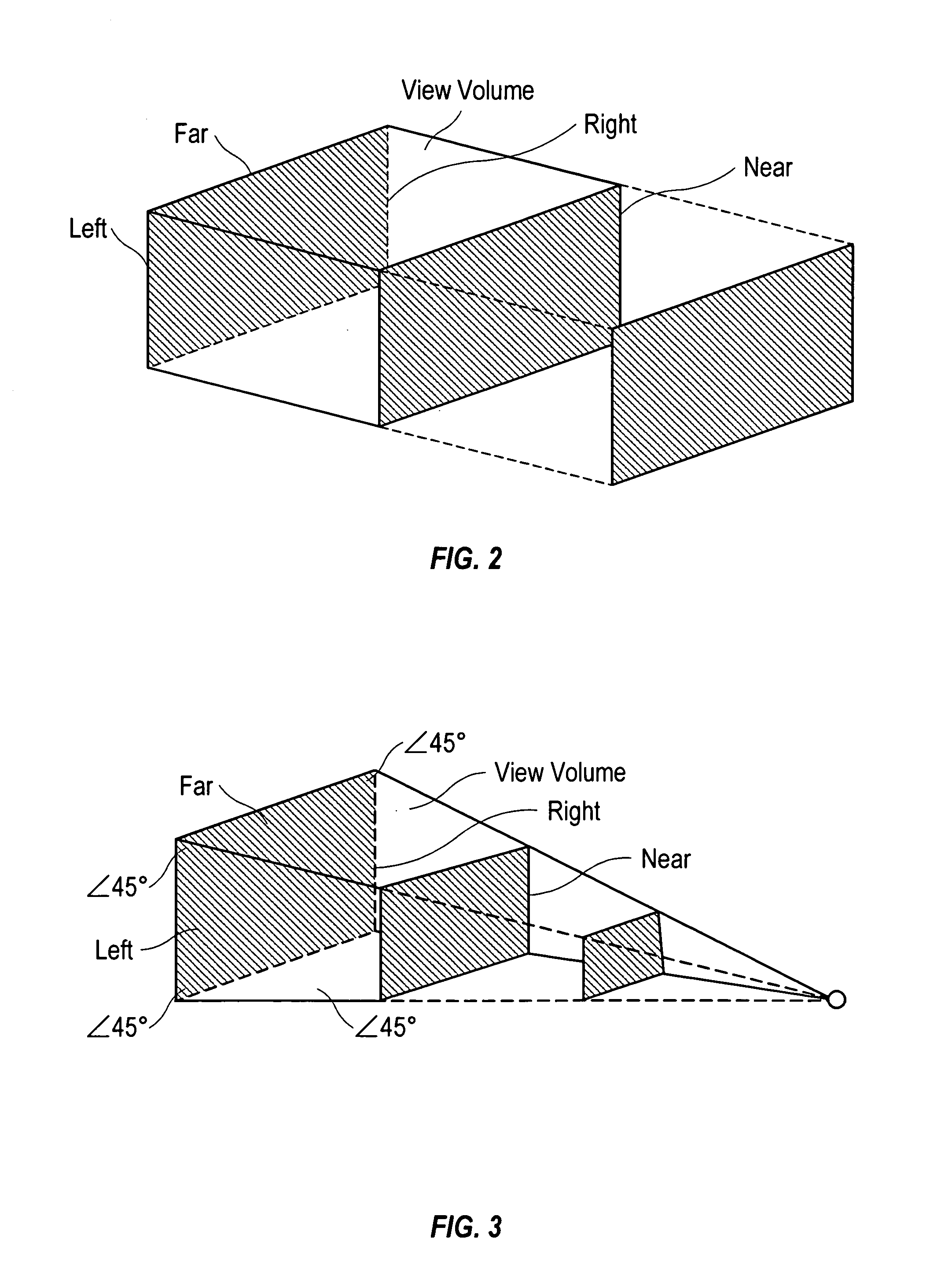Triangle clipping for 3D graphics
a 3d graphics and triangle clipping technology, applied in the field of 3d graphics and triangle clipping, can solve the problems of more than 3 billion bits per second, the computational and data transfer burden of placing the correct data into the frame buffer can still be very large, and the amount of data which must be moved around is very sizable, so as to save storage, eliminate the ping-pong effect, and save computation time and storage space.
- Summary
- Abstract
- Description
- Claims
- Application Information
AI Technical Summary
Benefits of technology
Problems solved by technology
Method used
Image
Examples
Embodiment Construction
[0069]The numerous innovative teachings of the present application will be described with particular reference to the presently preferred embodiment (by way of example, and not of limitation), in which:
Preferred System Context
[0070]The system context of the presently preferred embodiment is a GAMMA 3D Geometry and Lighting Accelerator chip for 3D graphics rendering using, among others, the OpenGL, Direct 3D, and QuickDraw 3D applications programming interfaces (APIs). The Hardware Reference Manual and Programmer's Reference Manual for this chip describe further details of this sample embodiment, and are both hereby incorporated by reference. Both are available, as of the effective filing date of this application, from 3Dlabs Inc. Ltd., 181 Metro Drive, Suite 520, San Jose, Calif. 95110. The geometry and lighting functions of graphics rendering are traditionally performed by the host computer. However, the GAMMA 3D Geometry and Lighting Accelerator is designed to be used in conjuncti...
PUM
 Login to View More
Login to View More Abstract
Description
Claims
Application Information
 Login to View More
Login to View More - R&D
- Intellectual Property
- Life Sciences
- Materials
- Tech Scout
- Unparalleled Data Quality
- Higher Quality Content
- 60% Fewer Hallucinations
Browse by: Latest US Patents, China's latest patents, Technical Efficacy Thesaurus, Application Domain, Technology Topic, Popular Technical Reports.
© 2025 PatSnap. All rights reserved.Legal|Privacy policy|Modern Slavery Act Transparency Statement|Sitemap|About US| Contact US: help@patsnap.com



